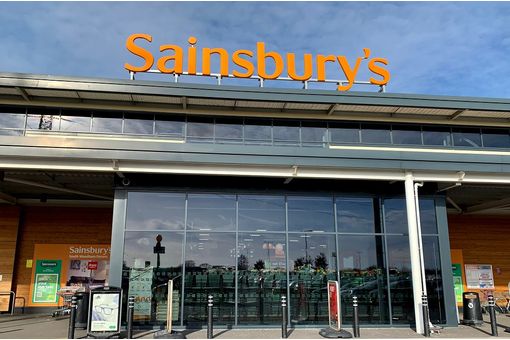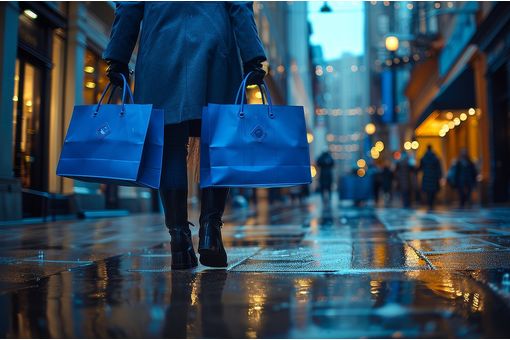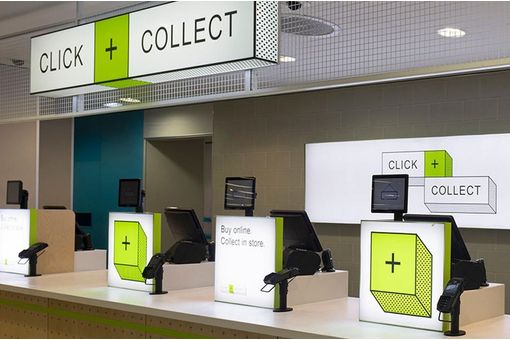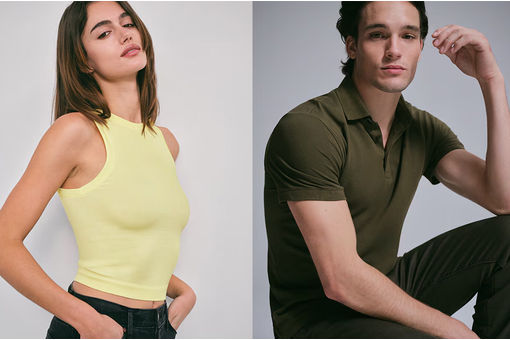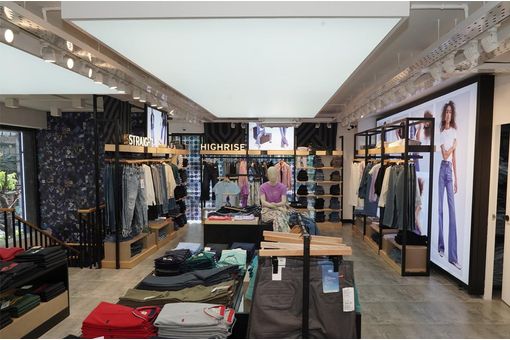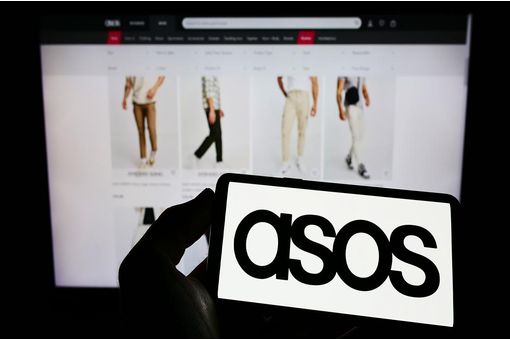Fashion Retail Store Types and Assortment Plan
The word retail means ‘breaking the bulk’ or selling smaller units of products to the customer for consumption or use rather than resale. Retailers sell through physical/online/direct selling methods. A retail store is an area where the business is set up to make goods available directly to the customers. The physical stores vary according to size (square feet area) and type. Hypermarket and supermarket store retailers generally have a large store format selling a multitude of items. They are generally located in the primary trade area. Fashion retailers selling apparel, footwear, bags and accessories exist in various retail formats. The assortment of products carried by these stores depend on their store size, merchandise type, variety and depth of assortment, and categories. Such store could be an exclusive brand outlet (EBO), multi-brand outlet (MBO), or large format store (LFS). Some retail stores are product category specific, while some offer a wide range of products that can fall under different categories. Based on these factors, there are eight major types of retail stores, which all offer fashion items like apparel, accessories, footwear, home furnishings and cosmetics. However, all formats of stores may not offer all fashion items.
Department store
A department store is a big outlet that offers goods that fall under different categories. Such stores widely include product lines related to apparel, appliances, toiletries, kitchenware, household items, furniture, electrical appliances and often food. Department managers or buyers are responsible for the product line management and advertisements & promotion related activities of each department. Examples are Shoppers Stop, Macy’s, Savarna stores, Big Bazaar, JioMart and many more. They follow a wide and deep assortment strategy.
Supermarket
Supermarkets are large retail outlets characterised as self-service outlets that deal with food items and a few non-food items. In non-food products, categories like pharmacies and bakeries can be included. Broadly it deals with FMCG products. Customers select their products from many options. They serve customers’ better by offering variety, convenience, and service needs. They follow a wide and deep assortment strategy. Examples are More, DMart, Star Bazaar etc.
Hypermarket
Hypermarkets usually combine departmental stores and supermarkets offering large merchandise under one roof. It may include clothing & apparel, groceries, appliances, kitchenware, household items, pharmacies, bakeries, furniture, fresh and frozen food items in greater depth and variety. It gives a one-stop shopping experience to the customers. Walmart, Metro Cash & Carry, IKEA are some of the best examples. They follow a wide and deep assortment strategy.
Specialty store
A specialty store offers various products in a single vertical category. These types of stores sell products of either the same brand or the same category. A specialty store may sell a wide variety of brands of a certain category of products. It follows a narrow and deep assortment strategy. For instance, Nykaa sells only cosmetics and beauty products but of many different brands. Lenskart and Pepperfry are some other examples of specialty store.
Convenience store
Convenience stores are situated at a very approachable location from one’s home or office. They generally have merchandise stocked up in an unplanned manner, including groceries, snacks, food, soft drinks, confectionaries, toiletries, newspapers, magazines etc. For example, 7-eleven is a convenience store. It follows a narrow and deep assortment strategy.
Discount store
Discount stores are self-explanatory from their name itself. Here merchandise is offered at a lower price than in traditional retail outlets. Some discount stores are like department stores with a wide range assortment. Prices are relatively lower because they buy in significant bulk and the stores are always filled or overloaded with merchandise. Examples of these types of stores are DMart, More, Walmart etc which follow a wide and deep assortment strategy.
Factory outlet
A factory outlet is where the company sells products that are out of demand or slightly damaged at a lower price. Prices are low because they are sent directly from the manufacturers eliminating intermediaries or distributors. The primary difference could be the quality of the products. Almost every brand has its dedicated factory outlet. It follows a narrow and shallow assortment strategy.
Online store
An online store is a website or an app that facilitates electronic commerce and allows customers to browse a catalogue of goods or services before making a purchase. Such stores have wide and deep assortments and offer a wide variety of product options, prices and post-purchase services to the customers.
Omni-channel
A brick-and-mortar store that advertises and sells its goods online is a typical example of an omni-channel retailer. This is an emerging form of business and many online retailers have opened up physical stores and vice-versa. Customers may preview the merchandise, colours and sizes online and get a feel of the same in the physical store. Some internet stores like Lenskart and Revlon (cosmetics) have virtual trial rooms. Lenskart has its brick-and-mortar stores while Revlon brand products are available in major departmental stores and cosmetic stores. Some other brands like Pepperfry, started as an online store and expanded to physical stores formats for customers to try, touch and feel its products. Pepperfry is a specialty furniture store and Lenskart is a specialty eyewear store, and both follow narrow and deep assortment strategy.
Fashion Inventory Assortment Plan
Merchandise carried in a store has various features that can be grouped into various styles or product lines. Each style has specific functions or purpose that fulfils a particular customer need. Merchandise can be further classified based on such styles, and accordingly a retailer can develop a buy and sales plan. Each item under a classification receives a specific identification number and identified as a stock-keeping unit (SKU) (Bohlinger, 2001).
Fashion products can be classified based on
a) gender (like menswear, womenswear and kidswear),
b) end-use or functionality,
c) seasonality,
d) styles and fashionability (whether in fashion or not) of the product.
A typical assortment plan is based on product’s classification into categories and sub-categories. Table 1 gives detail about a product assortment plan or SKU plan. Such assortment plans can help the retailer to develop a comprehensive buy plan, allocate budget to each classification, manage store space, and provide optimum store experience and customer satisfaction.
Every classification system is based on a series of hierarchical levels or style features. The hierarchy is based on the importance given to each feature by the customers. For example, in a bridal lehenga, colour, material, drape, surface ornamentation, waistline, length and fittings may be the order of the style features the customer is seeking. Table 1 gives a hierarchy of women handbags in terms of style, material, colours and textures. It is based on the past sales data analysis and future assumption that clutch bags have a higher chance of sale than tote bags. Such planning can help both the buyer and merchandiser to achieve targeted sale. The SKU plan will help to distribute stock, know the stock movement, help in re-order planning and minimise inventory carrying cost (Kincade, Gibson, & Woodard, 2004).
Table 1: Product Assortment Plan or SKU Plan
Type of product
Percentage of Stock
Total Value in ₹
Unit cost per item in ₹
Number of units
Women Handbags
1,00,000
Clutch
70.00%
70000
Leather
30.00%
Brown
10.00%
10000
400
25
Black
20.00%
20000
400
50
Fabric
40.00%
Printed
10.00%
10000
100
100
Embroidered
20.00%
20000
200
100
Tote
30.00%
Faux leather
15.00%
Red
5.00%
5000
200
25
Blue
10.00%
10000
200
50
Fabric
15.00%
Denim
10.00%
10000
200
50
Jute
5.00%
5000
100
50
Store Assortment Plan
An assortment plan provides the number of units and items a store should carry to provide optimum options to its customers. A store merchandise assortment plan has three major dimensions to develop an optimal merchandise mix, namely: Variety (no. of lines of products a retailer carries like menswear, womenswear, toys, appliances, cosmetics, and sports goods), breadth (the number of brands each line has) and depth (the average number of SKUs each brand in a line carries in terms of colour options, sizes, prints and prices).
Depending on the store type, different assortment strategies, their advantages and disadvantages are discussed in Table 2.
Table 2: Store Assortment Plan
Advantages
Disadvantages
Wide and deep (too many lines and options in each line)
Broad market coverage
High inventory investment
Full selection of items
General image
High level of customer traffic
Many items with low turnover
Customer loyalty
Some obsolete merchandise
One-stop shopping
No disappointed customers
Wide and shallow (too many lines but less options in each line)
Broad market
Low variety within product line
High level of customer traffic
Some disappointed customers
Emphasis on convenience customer
Weak image
Less costly than wide and deep
Many items with low turnover
One-step shopping
Reduced customer loyalty
Narrow and deep (a few lines but many options in each line)
Specialist image
Aimed at convenience customers
Good customer choice in categories
Least costly
Specialised personnel
High turnover items
Customer loyalty
No disappointed customers
Less costly than wide and deep
Narrow and shallow (a few lines and a few options in each line)
Too much emphasis on one category
Little width and depth
No one-stop shopping
No one-stop shopping
More susceptible to trends
Some disappointed customer
Greater effort needed to increase the size of the trading area
Weak image
Limited customer loyalty
Small trading area
As every retailer has to decide on exactly what to carry and in what amounts, it is their responsibility to find the right assortment mix that best suits their retail strategies. It is based on several factors like:
• Store type, size, location, positioning, competitors, customer profiling, trading area and investments
• past sales data, customer response, complaints, returns, lost sales and sales achieved, time of sales and lean periods
• Product variety and depth, good taste, trends, quality, price range, timing and product lifecycle
• consumer wants, demands, frequency of impulse purchases, demographics, social and cultural factors
• types of goods offered like specialty goods, shopping, convenience, seasonal and fashion goods and National brands vs Private brands
• elimination of product lines, store space management, limitations on product lines, and budgetary planning.
All pics: Shutterstock.com
- Bohlinger, M. S. (2001). Merchandise Buying (5th ed.). USA: Fairchild Publications, Inc.
- Kincade, D., Gibson, F., & Woodard, G. (2004). Merchandising Math : A manegerial approach. Prentice Hall.

